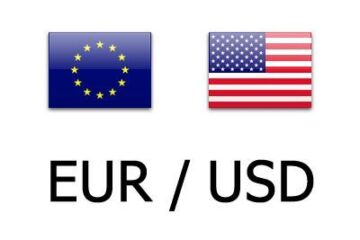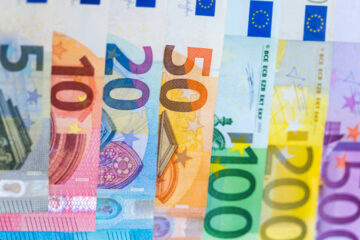Supply Shocks can be positive or negative.
JamesReillyWilson from Getty Images Signature; Canva
What Are Supply Shocks? How Do They Affect Prices?
When something happens to change the availability of a product or commodity, its price usually increases or decreases in response. This situation is known as a supply shock. It’s a temporary disruption that often occurs without warning, due to a one-time event, like a stranded oil tanker blocking other ships from accessing a trade route, or longer-term issues, such as a war, an embargo, or a global health crisis.
While the phrase seems negative, favorable supply shocks do exist. Technological breakthroughs introduce new systems or innovations to an economy and can effectively lower prices. We’ll discuss both in more detail below.
Supply Shocks Explained
The charts above illustrate negative and positive supply shocks. In both charts, equilibrium is designated by point A, output is designated by the X axis and prices are the Y axis. The chart on the left illustrates how a negative supply shock shifts the supply curve to the left, from line AS1 to AS2. In other words, output, or the amount of something produced, becomes reduced. When this happens, so long as there’s still demand for the product, prices (P) will increase sharply.
The chart on the right depicts a favorable, or positive, supply shock. In this scenario, a positive supply shock shifts the supply curve to the right (line AS1 to AS2). Here, the output is increased and thus prices fall.
What Is a Real-World Example of a Positive Supply Shock?
A positive supply shock occurs when there is an event that causes output of a product or commodity to increase and thus become more readily available to mass markets. An example of this could be as simple as a favorable growing season for a vegetable like corn. When the weather conditions are right, crop yields can be significantly higher than normal. Even if demand for corn is unchanged, so long as there is an increase in output, the price of corn will fall.
Another example of a positive supply shock has to do with the technology industry—in fact, this type is called a technology shock. The rise of the internet in the 1990s is one example, as it caused a paradigm shift both in how information is presented (i.e., the 24-hour news cycle) and how information is accessed (i.e., via search engines like Google). This positive supply shock effectively democratized knowledge, making it available instantly and at a low cost.
Other examples of technology shocks include the assembly line production method pioneered by automaker Henry Ford, as well as other advancements made during the Industrial Revolution.
What Is an Example of Negative Supply Shock?
Crude oil is often caught in the crosshairs of geopolitical tensions, and Russia’s unprovoked invasion of Ukraine in February 2022 proved no different. This incident—and subsequent condemnation from countries around the world—led to embargoes of Russian crude oil. Russia is the world’s second-largest exporter of petroleum, and as a result, crude prices per barrel skyrocketed more than 40%, from $73 per barrel in January 2022 to over $105 per barrel in March 2022.
Another example of a negative supply shock had to do with the semiconductor shortage that plagued the technology and automotive industries during the COVID-19 pandemic. Declining prices for memory chips in 2018 and 2019 had reduced output significantly. As the entire global workforce shifted to working remotely during the “stay at home” orders from March-June 2020, demand for these chips surged, and prices spiked as much as 20%.
What Is Not a Supply Shock?
People might think that when a central bank, like the Federal Reserve, increases the monetary supply, a positive supply shock occurs. The central bank may aim to improve market liquidity by lowering interest rates or undertaking quantitative easing measures, thus making it easier for homeowners to obtain a mortgage or for a bank to give out loans, because it has lower reserve requirements. However, while these measures are temporary and do boost the economy, they have longer-term consequences, affecting prices, wages, and ultimately, consumer purchasing power.
Supply shocks like the plight of the Ever Given, the oil tanker which ran aground and caused a one-boat blockade of the Suez Canal in July 2021, actually happen, but they don’t have long-term effects on employment or production. However, permanent supply shocks, such as paradigm shifts or tighter laws and regulations, can affect the broader economy. It’s up to a central bank to use tools at their disposal to combat supply shocks before they affect GDP growth and lead to more devastating long-term consequences, like recession.
What Causes Supply Shocks?
Any disruption, be it man-made, like a war, act of terrorism, or geopolitical event, or natural, such as an earthquake, hurricane, or drought, can be the driving force behind a supply shock. This disruption affects the web of production between a company and its suppliers, which can impact many of the world’s most commonly used products. This web is known as the supply chain.
What Are the Effects of Supply Shocks?
Supply shocks may be temporary, but given aggregate demand, they can often result in a dramatic increase or decrease in prices. Positive supply shocks cause prices to go down, while negative supply shocks send prices skyward.
Are Supply Shocks Related to Inflation?
Not always. Inflation simply means a period of rising prices. Crop failures and other natural disasters can affect food prices; however, when economists measure inflation, they are really talking about core inflation, which is the Consumer Price Index minus food and energy prices, since they are so often volatile.
Do Supply Shocks Contribute to Stagflation?
Yes. Stagflation is an especially nasty combination of inflation and high unemployment, plus a one-time event, like a war or an embargo, which makes it incredibly difficult for a central bank to control. The very term is a mix of the words “inflation” and “stagnation.”
Why Might Supply Shocks Lead to Rationing?
When demand exceeds supply, the more scarce a product or commodity is, the higher its price will be. An authority may try to conserve resources by spreading out their usage over a period of time, which is known as rationing.
How Do You Fix Supply Shocks?
The idiom says “time heals all wounds,” but when it comes to supply shocks, consumers expect central banks and those in power to act quickly to find a solution. Central banks can raise or lower interest rates and try other measures to boost economic growth or reduce unemployment. While there is no easy answer, it is important to remember that the nature of a supply shock is temporary, and hopefully, that it won’t last long.


